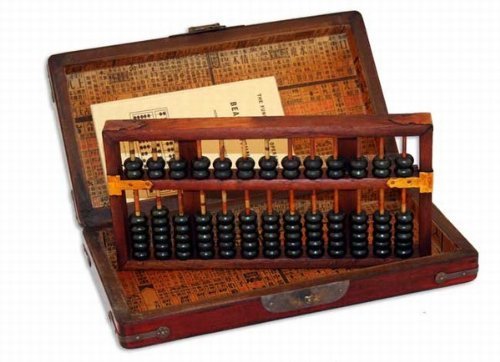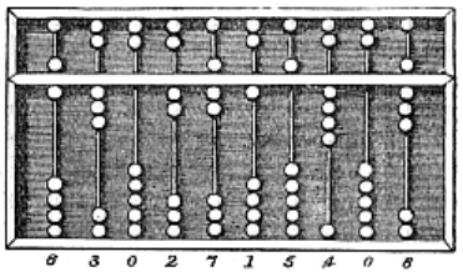Ancient China abacus was a tool used to calculate and was also a work of art and innovation. The abacus is an age-old calculating tool used since several centuries mainly in Asian countries like India, Japan and Korea. The Chinese abacus too has a long history and was widely used for all mathematical calculations in ancient China.

Ancient China Abacus at a Glance
The origins of the abacus in ancient China can be traced 5000 years back to c3000 BC. This was the earliest form of abacus ever designed in China that used a board with wires with beads strung on it. By c300 BC, the Chinese abacus underwent a major transformation and was developed into a major calculating device.
The abacus in ancient China was also known as the suanpan, its literal meaning being the counting tray. Many of the ancient and powerful dynasties in China used the abacus.
The greatest proof of the use of abacus in ancient China can be derived in the long scroll Along the River During the Qingming Festival painted by Zhang Zeduan, where the suanpan is painted with an account book.
This scroll was painted during the Song dynasty that ruled China from 960-1297 AD. It was during the Ming dynasty that the Chinese abacus spread beyond the Chinese territory and reached Japan.
Basic Structure of ancient Chinese abacus

The basic structure of the ancient Chinese abacus comprised of a tray, which has a height of about 20cms and varying widths. The tray was divided into two main sections by a horizontal beam with the top section referred as the heaven while the bottom part is referred as the earth.
There were more than seven rods in the tray and each rod consisted of two beads in the heaven part and five beads in the earth section. The beads were usually designed in the shape of a rhombus.
The bottom beads were mainly used for counting decimal and hexadecimal numbers. The suanpan was efficient for all simple and advanced calculations like addition, subtraction, multiplication, division, square root and cube root.
The basic calculation involved moving the beads up and down the rods towards and away from the horizontal beam. When the beads were moved towards the beam, it meant counting them in and moving them away meant not counting their value.
The extreme right vertical rod signified the ones place subsequently followed by tens, hundreds and thousand places while moving from right to left. The original position of the suanpan was when all the beads are away from the beam.
The abacus system in ancient China was an extremely advanced form of calculation. Even today, those well-versed with the Chinese abacus can easily calculate at the speed of the modern calculator.